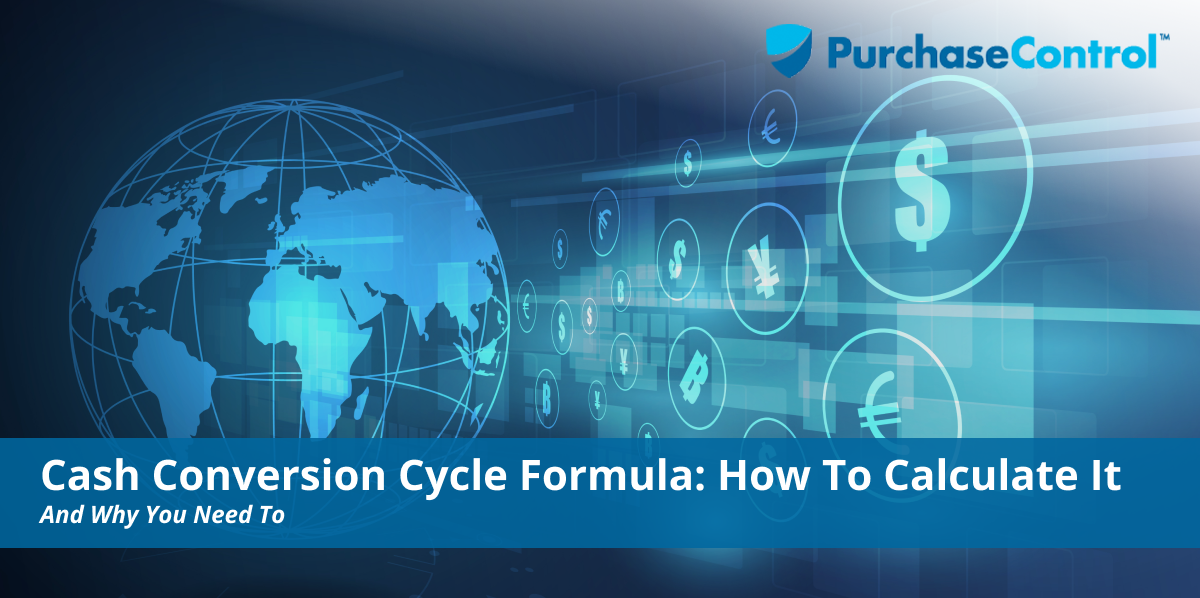The cash conversion cycle (CCC) is a measure of the length of time it takes to convert inventory investments into cash. Though it may sound complicated, it’s fairly easy to calculate these cash conversions with a formula.
Small business owners can use a variety of financial ratios to get a good idea about how well their business is performing. Chances are you’re familiar with common ratios such as the debt to equity ratio, the quick ratio, and the current ratio. However, the CCC may not be one you are familiar with.
The CCC is sometimes referred to as the net operating cycle or the cash cycle. This ratio is more important if you purchase and move your inventory on a regular basis.
The CCC gives you a lot of information from one calculation – including the amount of time your business to convert its current inventory Into cash, how long it takes to collect on your accounts receivables, and how quickly you need to pay your vendors.
If you use accounting software, you can pull the totals you need to calculate your CCC from your financial statements.
Cash Conversion Cycle Formula: How To Calculate It
To calculate your CCC, you have to follow multiple steps. Before you can do it, you first need totals for the following:
- Days of Inventory Outstanding (DIO)
- Days sales outstanding (DSO)
- Days payables outstanding (DPO)
CCC Formula = DIO + DSO – DPO
Each of these totals requires a separate calculation and you used the results of those calculations for the bassist of calculating the CCC. You also need to have the number of days in the. For which you’re calculating the CCC. For instance, if you’re calculating it for a quarter, you would need to use 90 days and if you are calculating it for the entire year, you would use 365 days.
Let’s consider Kathy – who manufactures and sells personalized goods. She decides to calculate the CCC for her business in 2019. These are the steps Kathy needs to take.
Step 1: Calculate DIO
The first part is calculating DIO. Kathy needs to calculate her days of inventory outstanding – or DIO. This is used to determine how many days it takes to turn the inventory to sales, with the DIO indicating the number of days Kathy holds onto the inventory before it is sold.
The formula for DIO is: Average Inventory / COGS x 365
To calculate DIO, Kathy needs to obtain her beginning and ending inventories for 2019. She will also need to obtain the cost of goods sold (COGS) for that same period.
On Kathy’s income statement, her beginning inventory for 2019 was $10,000 and her ending inventory balance was $7,300. The COGS for the year was $50,000.
Now it’s possible for Kathy to calculate her DIO:
(10,000 + 7,300) / 2 = Average Inventory Cost = $8,650
8,650/50,000 = .173
.173 x 365 = 63.14
This means it takes Kathy approximately 63 days to turn her inventory into sales.
Step 2: Calculate DSO
The next step is to calculate days sales outstanding or DSO. This is an important metric on its own because it indicates the number of days it takes for you to collect on your accounts receivable balances after you make a sale.
The formula for calculating DSO is:
DSO = Average Accounts Receivable / Total Credit Sales x 365
To calculate DSO, Kathy needs to obtain her average accounts receivable balance for the period, along with her total credit sales for the year.
Kathy’s beginning accounts receivable balance in 2019 was $10,000 with an ending accounts receivable balance of $7,000. Both of these totals are available on her balance sheet. Now Kathy needs to get her total credit sales for the year from her income statement which is $100,000. With these numbers, Kathy can complete the DSO calculation.
(10,000+7,000) /2 = 8,500 = Average accounts receivable balance
8,500 / 100,000 = .085 x 365 = 31.025
This means it takes Kathy an average of 31 days to get paid on an invoice.
Step 3: Calculate DPO
The third step is to calculate the number of days it takes the business to pay its suppliers, creditors, and vendors. This is known as days payable outstanding. The formula is as follows:
DPO = Average Accounts Payable / COGS x 365
To calculate DPO, Kathy needs to obtain her beginning and ending payables balance from her balance sheet along with the COGS for the period.
Kathy had a beginning accounts payable balance of $7,500 and then ending accounts payable balance of $8,100. Her cost of goods sold for the year was $50,000. This is the same amount that was used to calculate days inventory outstanding. Kathy can calculate the days payable outstanding as follows:
(7,500 + 8,100) \ 2 = $7,800 average accounts payable balance
$7,800 / 50,000 (COGS) = .156
.156 x 365 = 56.94
That means it takes Kathy an average of 57 days to pay her suppliers and vendors.
Step 4: Calculate CCC
The last step is calculating the CCC. To do this, add together the DIO and DSO, and then subtract the DPO.
In Kathy’s example, this means:
63.14 + 31.025 – 56.94 = 37.225
Kathy takes about 37 days to turn her inventory into cash. This information helps her assess how efficiently she is managing her working capital. Like with other cash flow calculations, the shorter the cash conversion cycle, the better the company is doing in terms of selling inventory and recovering cash while paying suppliers.
“The lower your CCC, the better. A negative cash conversion cycle is best as it means you maintain limited inventory, get paid quickly, and generally do not pay your creditors until customers pay you.”
The CCC is a useful calculation for potential investors and creditors but knowing your CCC is helpful for you too. Calculating your CCC can show how efficient your business is operating and whether you’re collecting payments from your customers on a timely basis. You’ll also be able to see how well your products are selling, and how quickly you manage inventory turnover.
It’s worth noting that in Kathy’s example above, the numbers were purely random. Because of this, the final calculation isn’t necessarily what it could be, if we were using an actual business’ numbers.
If your business does not have inventory, the CCC isn’t going to be as useful. Other accounting ratios, such as the quick ratio, liquidity analysis, current ratio, and accounts receivable turnover ratio are all better suited for businesses without inventory.
The cash conversion cycle needs to be compared to companies operating in the same industry and conducted on a trend. Measuring a company’s conversion cycle to the conversion cycles in previous years can help you gauge whether its working capital management is improving or deteriorating. Comparing the cycle of a company to its competitors can help determine whether a company’s cash conversion cycle is normal compared to its industry competitors. It’s important to remember that the CCC will differ by industry sector based on the nature of business operations.
the CCC traces the life cycle of cash that used for business activities. It follows the cash as it converts into inventory and accounts payable then into expenses for product or service development all the way through to sales and accounts receivable and then back into cash in hand. The c c c represents how fast the company converts the invested cash from start to end.
That said, the CCC may not provide meaningful information as a stand-alone number for any given period. Financial analysts use it to track businesses over multiple periods and to compare a company to its competition. If two companies have a similar value for return on equity (ROE) and return on assets (ROA), analysts can use the CCC to determine which company may be worth investing in, since the lower CCC indicates that the company generates similar returns more quickly.
The CCC can also be used by companies management to address their credit purchase payment methods and cash collections from debtors.
PurchaseControl can help with managing inventory from suppliers and track DPO in AP
Find Out How








